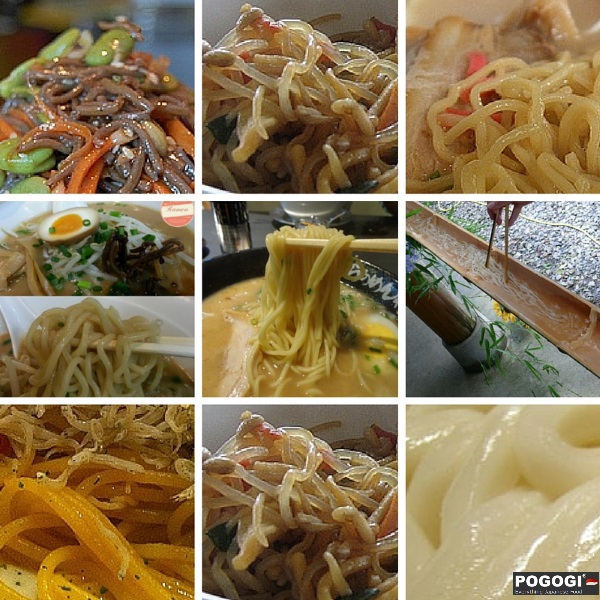Japanese Noodles: A Flavorful Journey Through Tradition And Innovation
Japanese noodles have become a global phenomenon, captivating food lovers with their rich flavors and diverse textures. Whether you're slurping soba on a chilly day or enjoying a steaming bowl of ramen at a cozy izakaya, these noodles offer more than just sustenance—they're a cultural experience. In this article, we'll dive deep into the world of Japanese noodles, exploring their history, varieties, and the reasons why they’ve become a favorite among food enthusiasts worldwide.
Now, let's be honest, when most people think of Japanese cuisine, sushi and tempura often steal the spotlight. But if you ask me, there's nothing quite like digging into a bowl of perfectly crafted noodles. They're the unsung heroes of Japanese gastronomy, offering comfort, variety, and a taste of tradition in every bite. So, buckle up because we're about to embark on a noodle-filled adventure!
From their humble beginnings to their current status as international culinary stars, Japanese noodles have a fascinating story to tell. In the following sections, we'll uncover the secrets behind their popularity, explore the different types available, and even share some tips for making them at home. Whether you're a seasoned noodle connoisseur or just starting your culinary journey, this article has something for everyone.
Read also:British Airways Flight Nowhere The Experience That Takes You Everywhere
History of Japanese Noodles
From China to Japan: The Origins
Believe it or not, Japanese noodles didn't originate in Japan. Their story begins in China, where noodles have been a staple for thousands of years. Around the 9th century, Chinese-style noodles made their way to Japan via Buddhist monks and traders. Initially, these noodles were considered a luxury item, reserved for special occasions and the upper class. Over time, however, they became more accessible, evolving into the beloved dishes we know today.
As the Japanese adapted these noodles to their own tastes and ingredients, they developed unique variations that reflected their culture and culinary preferences. For example, soba noodles, made from buckwheat, became a staple in mountainous regions where wheat was harder to grow. Meanwhile, udon, with its chewy texture, became a favorite across the country.
The Evolution of Japanese Noodles
Throughout history, Japanese noodles have undergone significant changes. In the Edo period (1603-1868), ramen made its debut in Japan, brought by Chinese immigrants. This dish quickly gained popularity, especially among urban workers who appreciated its hearty and filling nature. Over the years, ramen evolved into countless regional variations, each with its own distinct flavors and toppings.
In the modern era, Japanese noodles have not only retained their traditional charm but have also embraced innovation. Today, you can find everything from classic homemade soba to futuristic instant ramen cups, all celebrating the rich heritage of Japanese noodle culture.
Types of Japanese Noodles
Ramen: The King of Japanese Noodles
Ah, ramen. Need I say more? This iconic dish has become synonymous with Japanese cuisine worldwide. Ramen typically consists of wheat noodles served in a flavorful broth, topped with ingredients like sliced pork, nori, menma, and soft-boiled eggs. But did you know that there are four main types of ramen broth? Each one offers a unique taste experience:
- Shoyu: Soy sauce-based broth, known for its rich umami flavor.
- Shio: Salt-based broth, offering a lighter, more delicate taste.
- Miso: Miso paste-based broth, providing a creamy and slightly sweet profile.
- Tonkotsu: Pork bone broth, famous for its thick, creamy consistency.
No matter which type you choose, one thing is certain: ramen is a dish that warms the soul.
Read also:Yumi Etos Hospitalization A Closer Look At Her Health Crisis And Its Implications
Soba: The Elegant Buckwheat Noodle
Soba noodles are made primarily from buckwheat flour, giving them a nutty flavor and distinctive texture. They're often served cold with a dipping sauce or hot in a broth. Soba is not just a food; it's a symbol of Japanese culture, often enjoyed during special occasions like New Year's Eve. Here are a few popular soba dishes:
- Zaru Soba: Cold soba noodles served on a bamboo mat with a dipping sauce.
- Kake Soba: Hot soba noodles in a light broth, perfect for colder weather.
- Tori Soba: Soba noodles with chicken and vegetables, offering a hearty meal.
Soba is also believed to have health benefits, thanks to its high fiber content and gluten-free nature.
Udon: The Chewy Delight
Thicker and Heavier than Soba
Udon noodles are thicker and chewier than soba, made from wheat flour, water, and salt. Their simplicity allows them to pair beautifully with a wide range of ingredients and flavors. Udon dishes vary greatly depending on the region, but some popular options include:
- Kitsune Udon: Udon topped with a piece of sweet fried tofu, resembling a fox's face.
- Curry Udon: Udon served in a spiced curry broth, offering a fusion of flavors.
- Yaki Udon: Stir-fried udon with vegetables and meat, creating a savory stir-fry.
Whether you prefer them in a hot broth or stir-fried, udon noodles deliver satisfaction in every bite.
Health Benefits of Japanese Noodles
Nutritional Value and Wellness
Japanese noodles aren't just delicious; they're also nutritious. Soba noodles, in particular, are packed with vitamins and minerals, including B vitamins, magnesium, and potassium. They're also lower in calories compared to other types of noodles, making them a great option for those watching their weight.
Ramen, while often associated with instant versions, can be a healthy meal when prepared with fresh ingredients. The key is to balance the rich broth with plenty of vegetables and lean proteins. Udon, on the other hand, provides a good source of energy due to its carbohydrate content, making it a favorite among athletes and active individuals.
Cooking Japanese Noodles at Home
Step-by-Step Guide to Perfect Noodles
Ready to try your hand at making Japanese noodles? Here's a simple guide to get you started:
- Choose Your Noodles: Decide whether you want to make soba, udon, or ramen.
- Prepare the Ingredients: Gather fresh vegetables, proteins, and seasonings.
- Cook the Noodles: Follow the package instructions for cooking time and water ratio.
- Create the Broth: For ramen, mix dashi, soy sauce, and other seasonings. For soba or udon, use a simple broth or dipping sauce.
- Assemble and Serve: Add toppings like nori, scallions, and soft-boiled eggs for extra flavor.
With a little practice, you'll be whipping up restaurant-quality noodles in no time!
Regional Variations
Exploring Local Flavors
Japan is a country of diverse regions, each with its own take on noodles. For instance, Sapporo in Hokkaido is famous for its miso ramen, while Hakata in Kyushu is known for its tonkotsu ramen. In the Kanto region, soba noodles are typically served with a strong dipping sauce, while in Kansai, the sauce is lighter and sweeter.
Udon also varies by region. In Sanuki, Kagawa Prefecture, udon noodles are made with a specific flour blend, resulting in a unique texture and flavor. Meanwhile, in Nagoya, curry udon reigns supreme, combining the best of Japanese and Indian cuisines.
Where to Enjoy Japanese Noodles
The Best Spots Around the World
If you're looking to enjoy authentic Japanese noodles, there are plenty of options available. In Japan, you can visit traditional noodle shops or modern ramen chains. Outside of Japan, cities like New York, London, and Sydney boast an impressive selection of Japanese noodle restaurants.
When dining out, don't be afraid to ask for recommendations or try something new. Many restaurants offer unique twists on classic dishes, allowing you to experience the full spectrum of Japanese noodle culture.
Tips for Noodle Lovers
Maximizing Your Noodle Experience
Here are a few tips to enhance your noodle enjoyment:
- Slurp Loudly: In Japan, slurping noodles is a sign of appreciation and helps cool them down.
- Customize Your Dish: Don't be afraid to add extra toppings or adjust the seasoning to suit your taste.
- Experiment with Recipes: Try making different types of noodles at home to discover your favorites.
Remember, the world of Japanese noodles is vast and exciting, so don't limit yourself to just one type!
Conclusion
Japanese noodles are more than just food; they're a celebration of culture, tradition, and innovation. From the rich history of soba to the modern-day popularity of ramen, these noodles have captured the hearts and stomachs of people around the world. By understanding their origins, varieties, and health benefits, we can truly appreciate the magic of Japanese noodles.
So, the next time you're craving a bowl of comfort, reach for some Japanese noodles. Whether you're dining out or cooking at home, there's always a new flavor or technique to explore. And hey, don't forget to share this article with your fellow noodle enthusiasts—let's spread the love for Japanese noodles together!
Table of Contents
- History of Japanese Noodles
- Types of Japanese Noodles
- Udon: The Chewy Delight
- Health Benefits of Japanese Noodles
- Cooking Japanese Noodles at Home
- Regional Variations
- Where to Enjoy Japanese Noodles
- Tips for Noodle Lovers



